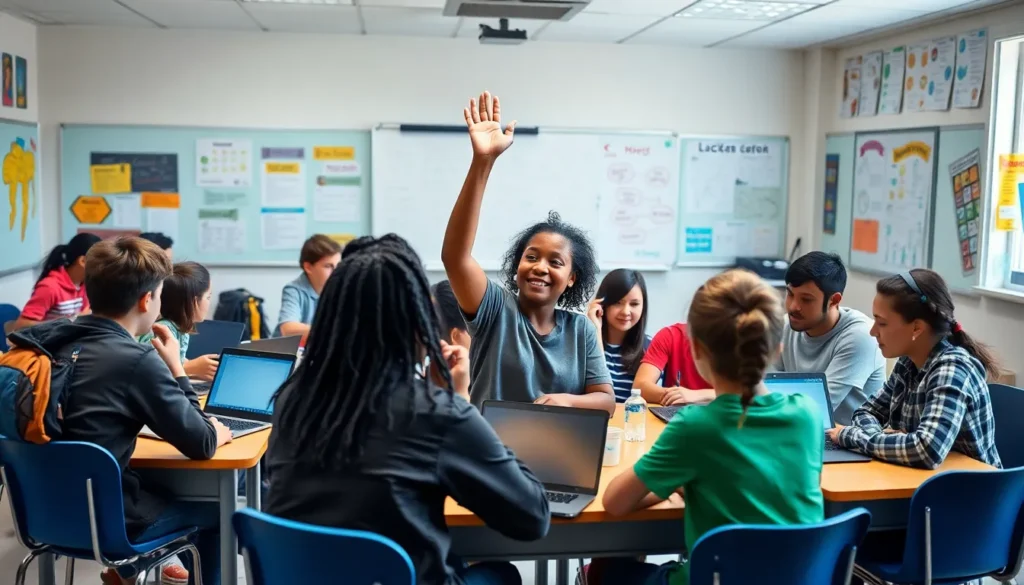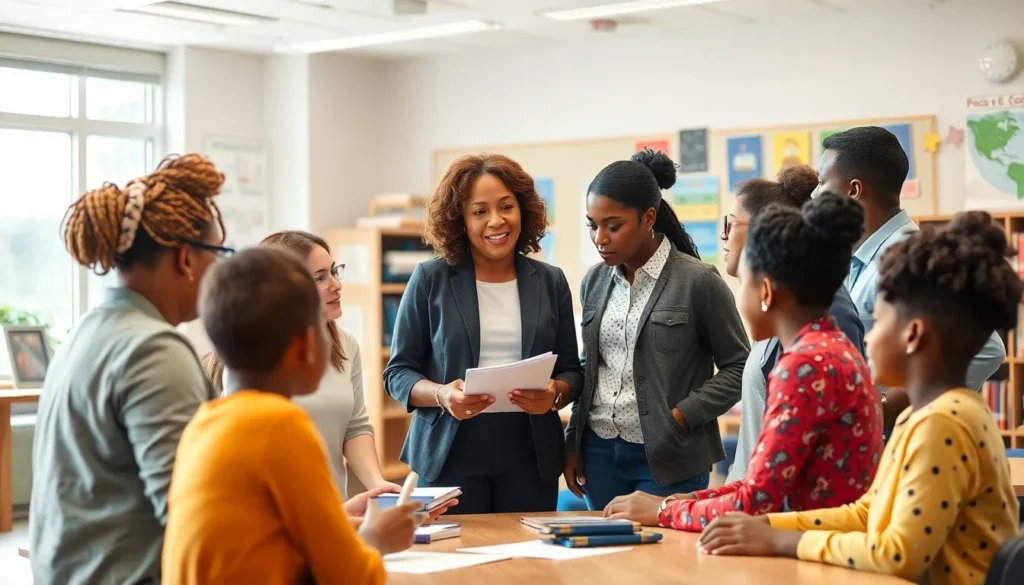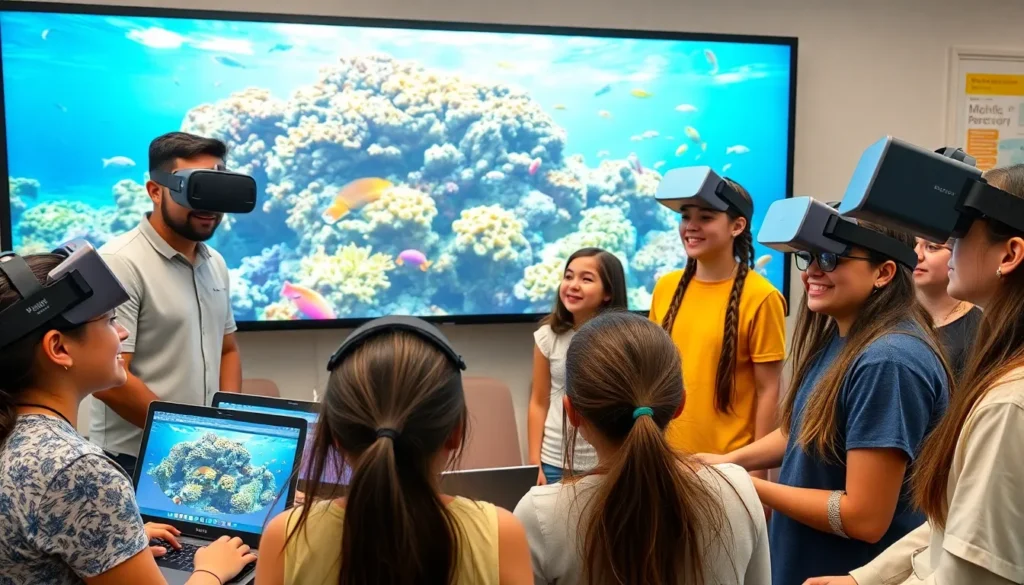Table of Contents
ToggleImagine trading your hometown for a new country, diving into a whirlwind of culture, food, and maybe even a bit of awkward language mishaps. Student exchange programs offer just that—a chance to swap your daily routine for an adventure that’ll make your Instagram followers green with envy. Whether it’s mastering the art of French pastries or navigating the bustling streets of Tokyo, these programs open doors to experiences that textbooks can only dream of.
Overview of Student Exchange Programs
Student exchange programs offer a platform for participants to engage deeply with different cultures, languages, and lifestyles. These programs enable students to live abroad for a designated period, typically ranging from three months to a full academic year. During this time, students attend local schools and immerse themselves in daily life, gaining unparalleled insights into new customs and traditions.
In many countries, these exchanges facilitate personal growth and academic enhancement. Participants often report increased independence and improved communication skills, as they adapt to various social environments. Friends become global, as connections made through these experiences often last a lifetime.
Cultural exposure plays a significant role in the educational aspect of student exchange programs. Participants frequently explore historical landmarks, enjoy regional cuisines, and participate in local festivals. Such activities create vibrant memories while enhancing cultural understanding.
Academic recognition occurs widely in these programs. Most institutions allow students to transfer credits earned abroad, ensuring that participants maintain their academic standing. This arrangement encourages students to take full advantage of the educational content provided in their host countries.
Prominent organizations, like AFS Intercultural Programs and Rotary International, actively support student exchange initiatives. They provide guidance, resources, and scholarships to help students maximize their experiences. Programs in countries such as Japan, France, and Germany attract participants eager to explore diverse educational landscapes.
Overall, student exchange programs serve as gateways to enrich lives through cultural exchange, language acquisition, and personal development. Embracing this opportunity leads to transformative journeys, shaping future leaders with global perspectives.
Benefits of Student Exchange Programs

Student exchange programs provide numerous benefits, from cultural immersion to academic growth. These opportunities shape students into globally aware individuals with unique perspectives.
Cultural Exchange
Cultural exchange enables participants to experience new customs firsthand. Immersion in local traditions fosters appreciation for diversity. Students often taste regional dishes, participate in traditional festivals, and explore historical landmarks. These experiences create lasting memories and deepen cultural understanding. Engaging with local peers allows students to form friendships across borders, enhancing their global network. Exposure to different lifestyles cultivates adaptability and open-mindedness, critical traits in today’s interconnected world.
Academic Advantages
Academic advantages play a significant role in student exchange programs. Transferring credits helps students maintain their educational trajectory while studying abroad. Exposure to diverse teaching styles enriches academic experience and deepens subject knowledge. Students often engage in unique courses that may not be offered in their home institutions. Such learning experiences can spark new interests and career paths. Enhanced communication skills frequently result from participation in classes taught in different languages, preparing students for future challenges in an increasingly globalized job market.
Types of Student Exchange Programs
Student exchange programs come in various formats, mainly divided into short-term and long-term options. Each type offers unique experiences tailored to different student needs.
Short-Term Programs
Short-term programs typically last between three weeks to three months. They often focus on specific activities, such as language immersion or cultural workshops. Students engage in intensive learning experiences, allowing them to grasp concepts quickly. Participants often live with host families or in dorms, facilitating cultural exchange. These programs emphasize hands-on experiences, such as cooking classes or community service initiatives. Students benefit from short-term exchanges by gaining global perspectives without a significant time commitment. Numerous organizations, like AFS Intercultural Programs, sponsor these exchanges, offering support and resources for participants.
Long-Term Programs
Long-term programs extend from six months to a full academic year. These immersive experiences grant students deeper connections with local cultures and communities. Participants attend schools in their host countries, studying alongside local students. Long-term exchanges also allow students to earn academic credits transferable to their home institutions. Diverse coursework often presents new subjects that may not exist back home. Robust support networks, including host families and exchange coordinators, aid students throughout their journeys. Participants frequently report profound personal growth and lasting relationships formed during these extended stays.
Challenges Faced by Participants
Student exchange programs offer enriching experiences but also present significant challenges. Adjusting to a different culture and educational system can be daunting.
Cultural Adjustment
Cultural adjustments often prove to be the most challenging aspect for participants. Students may encounter language barriers, different social norms, and unfamiliar customs. Navigating daily interactions requires patience and openness. Homesickness frequently affects students who miss family, friends, and familiar surroundings. Over time, many students learn to embrace their new environment, leading to personal growth and adaptability. Building friendships with locals can ease this adjustment, fostering a sense of belonging. Many students find that actively participating in community events enhances their understanding of local culture.
Academic Differences
Academic differences might surprise students during their exchange. New grading systems and teaching methodologies often differ from what participants are used to. Engaging in group work may be more emphasized abroad, requiring students to adapt to collaborative learning. Language proficiency also plays a significant role; students might struggle with classes conducted in a foreign language. Meeting different academic expectations often demands additional effort and commitment. However, these experiences can spark new interests in subjects, highlighting the value of educational diversity. Many participants learn to appreciate varied perspectives on knowledge and skills, enriching their academic journey.
How to Prepare for a Student Exchange Program
Preparing for a student exchange program requires careful planning and proactive steps. Start by researching the destination country thoroughly. Understanding local customs, traditions, and social norms helps set realistic expectations.
Determine the program’s requirements and deadlines. Gathering necessary documents, such as passports and visas, ensures a smooth application process. Communicating with program advisors or past participants provides valuable insights into the experience.
Organizing finances is crucial. Budgeting for travel, accommodation, and daily expenses helps avoid unexpected challenges. Open a local bank account if possible, as this simplifies money management while abroad.
Learning the local language enhances immersion. Taking language classes or using language-learning apps can build confidence and facilitate interactions. Practicing basic phrases offers a head start in communicating with locals.
Packing appropriately for the destination’s climate and culture is essential. Prepare a checklist that includes clothing, electronics, and personal items. Bringing gifts for host families signifies appreciation and fosters goodwill.
Establishing goals for the exchange experience is beneficial. Setting personal, academic, and cultural objectives enhances focus and enriches the journey. Writing down these goals can reinforce motivation and track progress throughout the program.
Connecting with future host families and local peers aids in easing the transition. Engaging in pre-exchange conversations helps build relationships and fosters a sense of belonging. Embracing the upcoming adventure creates a positive mindset that enhances the overall experience.
Student exchange programs offer transformative experiences that extend well beyond the classroom. By immersing themselves in new cultures and environments, participants develop essential life skills and broaden their worldviews. These programs not only enhance academic learning but also foster personal growth and adaptability, preparing students for an increasingly interconnected global landscape.
The friendships and memories formed during these exchanges create lasting bonds that transcend borders. As students navigate challenges and embrace new opportunities, they emerge as more confident and culturally aware individuals. Ultimately, student exchange programs are invaluable journeys that shape the leaders of tomorrow.










